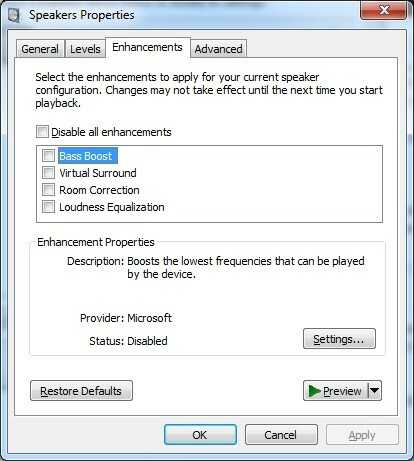0
Compared to previous laptop computers I had, I've found that the different Thinkpad T*** series I have, have a low or at best "medium" output loudspeaker volume (that's normal: they are not designed for this purpose, and the reason is probably that the hardware loudspeaker has a low power).
In some situations, it could be useful to have a louder volume.
I've already:
- set max volume in my application
- set max volume in the Windows 7 mixer
checked the possible device audio "Enhancements", but none of them really adds volume
Question: is there a generic audio driver that could replace the Conexant 20672 SmartAudio HD driver, that has a volume boost feature?
Note: even if not 100% guaranteed to work, I think it could be worth trying another driver: laptop's built-in soundcards often have a generic Realtek or similar chipset that meet the AC97 standard)

@n8te I'm already using hardware solutions in some situations (sometimes external loudspeakers, and I also use a pro external USB audio interface when I work on audio), but here I'm specifically speaking about the cases where I can't bring a hardware solution, thus I'm looking for a software solution. +10dB or even +5dB would already be ok, if not more is possible. – Basj – 2018-09-07T10:10:21.533